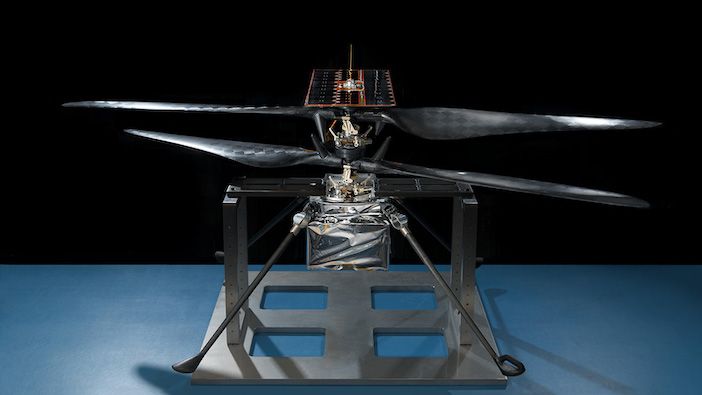The Mars Helicopter project has passed a number of key tests over the past several months and is approaching its final phase of testing, NASA has said.
The small autonomous helicopter is expected to reach the surface of Mars in February 202, as part of the Mars 2020 rover. It will be deployed a few months later with initial test flights of up to 90 seconds long will begin — the first from the surface of another world.
The Mars Helicopter will be the first vehicle ever to attempt heavier-than-air flight on another planet.Its purpose is to confirm that powered flight in the tenuous Martian atmosphere, which is 1% the density of Earth’s is possible and that it can be controlled from Earth over large interplanetary distances.
MiMi Aung, project manager for the Mars Helicopter at NASA’s Jet Propulsion Laboratory (JPL) in Pasadena, California said, “Nobody’s built a Mars Helicopter before, so we are continuously entering new territory.
“Our flight model – the actual vehicle that will travel to Mars – has recently passed several important tests.”
Early this year the team operated a model of the Mars Helicopter in a simulated Martian environment.
Since then the helicopter was moved to Lockheed Martin Space in Denver for compatibility testing with the Mars Helicopter Delivery System, which will hold the 1.8kg spacecraft against the belly of the Mars 2020 rover during launch and interplanetary cruise before deploying it onto the surface of Mars after landing.

In Denver, the Mars Helicopter and its delivery system were checked to make sure that the electrical connections and mechanisms that linked the flight vehicle with its cradle fit snuggly. Then, while still mated, the duo endured the sorts of vibrations they will experience during launch and in-flight operations. The thermal vacuum portion of the testing introduced them to the kinds of extreme temperatures (down to -200 degrees Fahrenheit, or -129 degrees Celsius) that they will encounter in space and on Mars and that could cause components to malfunction or fail.
The Mars Helicopter returned to JPL on May 11, 2019, for further testing and finishing touches. A new solar panel that will power the helicopter was installed and the vehicle’s rotor blades were spun up.
“We expect to complete our final tests and refinements and deliver the helicopter to the High Bay 1 clean room for integration with the rover sometime this summer,” said Aung, “but we will never really be done with testing the helicopter until we fly at Mars.”
The Mars Helicopter will launch with the Mars 2020 rover on a United Launch Alliance Atlas V rocket in July 2020 from Space Launch Complex 41 at Cape Canaveral Air Force Station, Florida.




